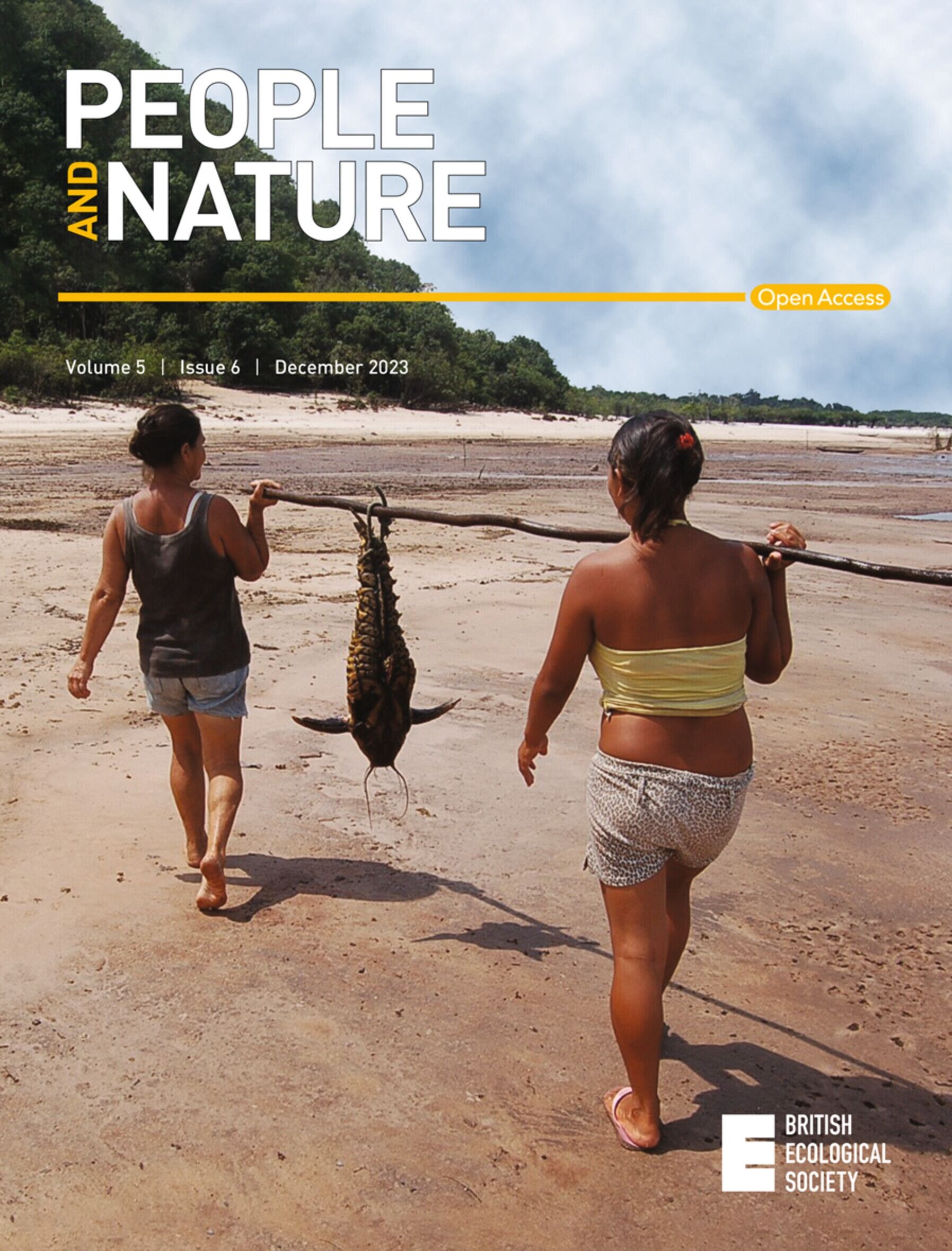Spatial restrictions hinder avoidance of choke species in an Indigenous rights‐based fishery
IF 4.9
1区 环境科学与生态学
Q1 BIODIVERSITY CONSERVATION
引用次数: 0
Abstract
Nutrient‐rich waters along the Pacific coast of North America support diverse fish communities that have helped sustain coastal peoples for millennia. Five Nuu‐chah‐nulth First Nations on the west coast of what is now known as Vancouver Island, Canada, hold constitutional Indigenous rights to conduct a multispecies community fishery, which includes Pacific Halibut (Hippoglossus stenolepis). A 2009 court decision defined the extent of these Indigenous rights to be within 9 nm of the coast, thereby not fully recognizing the knowledge and authority of the traditional leadership and raising concerns about the potential for an increase in rockfish bycatch. Yelloweye Rockfish (Sebastes ruberrimus) are a potential ‘choke’ species for this fishery because the two species occupy similar depth ranges. A choke species is one that is caught incidentally while targeting other species and, if caught in excess of its quota limits, can trigger a halt to fishing on the target species. Guided by the insights of local Indigenous peoples and using both fishery‐independent survey and commercial longline catch data, we investigated the effects of fishing depth and spatial restriction on the relative catch weights of these two species using spatiotemporal models. We find evidence that a confined fishing area can limit opportunities for avoiding choke species. Specifically, fishing at depths deeper than 175 m, which occur outside the court defined area (CDA), would provide more opportunities for catching halibut while avoiding Yelloweye Rockfish than are currently available within the CDA. This Indigenous‐informed, analytical approach to a management problem is just one example of how Western scientists can engage in coproduction of knowledge with Indigenous peoples to transition from the ‘status quo’ towards a practice of ‘Two‐Eyed Seeing’ that more effectively balances Indigenous rights and species conservation. Policy implications: Our study highlights (1) the importance of considering choke species distributions and opportunities for their avoidance when implementing spatial harvest restrictions and (2) how related analytical and management decisions can benefit from being guided by the advice of Indigenous knowledge holders. Read the free Plain Language Summary for this article on the Journal blog.空间限制阻碍了以土著权利为基础的渔业避开窒息物种
北美太平洋沿岸营养丰富的水域养育着多样化的鱼类群落,这些鱼类群落千百年来一直帮助沿岸居民维持生计。加拿大温哥华岛西海岸的五个努-查-努尔特(Nuu-chah-nulth)原住民拥有从事多鱼种社区渔业的宪法土著权利,其中包括太平洋大比目鱼(Hippoglossus stenolepis)。2009 年的一项法院判决将这些土著权利的范围界定为海岸 9 海里以内,从而没有充分承认传统领导的知识和权威,并引发了对岩鱼兼捕渔获物可能增加的担忧。黄眼石首鱼(Sebastes ruberrimus)是这一渔业的潜在 "扼杀 "鱼种,因为这两个鱼种占据相似的深度范围。扼杀鱼种是指在捕捞其他鱼种时偶然捕获的鱼种,如果捕获量超过配额限制,就会导致目标鱼种的捕捞活动停止。 在当地原住民见解的指导下,利用独立于渔业的调查和商业延绳钓渔获量数据,我们使用时空模型研究了捕捞深度和空间限制对这两种鱼类相对渔获量的影响。 我们发现有证据表明,有限的捕捞区域会限制避开窒息性鱼种的机会。具体而言,在法庭划定区域(CDA)外水深超过 175 米的水域捕鱼,将比目前在法庭划定区域内有更多机会捕获大比目鱼,同时避开黄眼石首鱼。 西方科学家如何与土著居民共同创造知识,从 "现状 "过渡到 "两眼观察 "的实践,从而更有效地平衡土著居民的权利和物种保护。 政策影响:我们的研究强调了:(1)在实施空间采伐限制时,考虑窒息物种分布及其避免机会的重要性;(2)相关分析和管理决策如何从土著知识持有者的建议中获益。 在期刊博客上免费阅读本文的通俗语言摘要。
本文章由计算机程序翻译,如有差异,请以英文原文为准。
求助全文
约1分钟内获得全文
求助全文

 求助内容:
求助内容: 应助结果提醒方式:
应助结果提醒方式:


